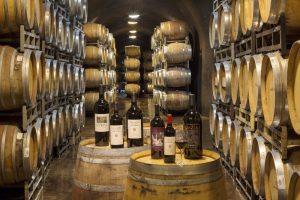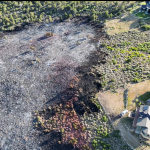WineInk: Wood and wine
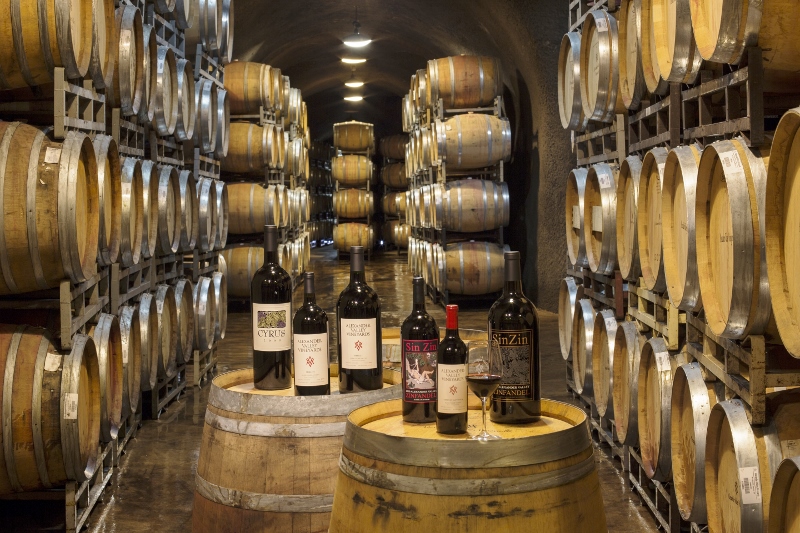
Courtesy photo
With the heat turned up here in the high country, I got to thinking about the chilly wine caves and barrel rooms I have had the opportunity to explore over the years. The cool, dry 55° air, the shadows dancing on the carved ceilings of the underground caves, the hushed echoes bouncing off the walls as the winemaker explains the process of storing and aging wine in barrels are both intoxicating and refreshing.
If you are ever asked on a wine tour (“Would you like to see the caves?”), never say “no.”
Walk into almost any wine-tasting room on the planet, and they will be there: wine barrels. They may be stacked over by a wall or set on their tails with a piece of glass across the top, making for a tasting table. They might serve as stands for bottle displays or perhaps have books stacked on top of them.
But they are always there.
And 99% of the time, they are strictly decoration, a device used to convey the romance of wine lying in wait until it is finally time to bottle and drink. The real barrels, the ones that do the work, are stored in temperature-controlled cellars or caves, stacked high on their sides, filled with wines made of different vintages and grape varieties.
Many winemakers will tell you that aging a wine in wood is similar to using spices when making a fine meal. If you cook, you know that engaging different spices will subtly impact the aromas and flavors of your dishes. The same is true of the influence of wood on the wines as they rest in the barrels for months or even years at a time.
The practice of aging wine in barrels made of oak, like most things in wine, has origins dating back a couple of thousand years to the Romans. As the Roman armies plundered northward on conquests into what is now Europe, they required vessels to transport wines for their thirsty soldiers. Originally, they used clay bottles called amphorae, but they were heavy and cumbersome. Something had to be done.
Enter the Gauls, beer drinkers who had learned that by producing barrels from oak trees and wrapping the wooden staves with steel, they could both keep beer fresh and transport it more easily. Knowing a good idea when they saw it, the Romans stole it and had well-lubricated forces for the rest of their reign.
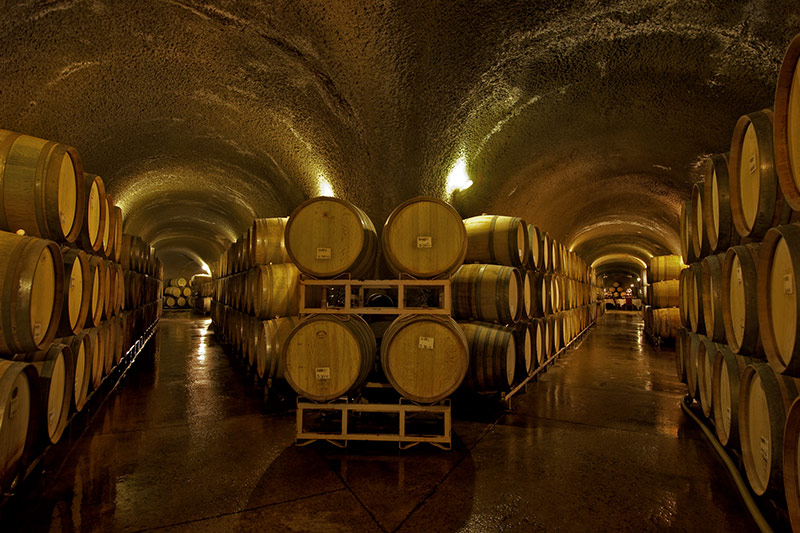
Ever since, winemakers have sought good wood to make better and better wines. Just about all red wines, and many whites, are treated with oak. The majority of fine wines are aged in either French or American (and occasionally Hungarian or Slavonian) oak barrels. The effect of oak influences the color, the flavor, and the feel of a wine — basically the entire package. Used with a deft and gentle hand, an oak regime will work with a wine to soften tannins, making it rounder and more palatable; give it hints of vanilla or cocoa or cloves to enhance its flavors and aromas; and deepen the shades and hues to intensify its beauty in the glass.
The heart and soul of the wood world for wine barrels can be found in central France in a series of six oak forests. Ranging from south to north, these are Limousin, Vosges, Nevers, Bertranges, Allier, and Tronçais. For artisan winemakers, the wood from these forests is as much a differentiator in their wines as the grape varieties. Here cooperages, or tonnelleries, as they are called in French, cultivate white oak trees that are prized for the tight grains in the wood. They then harvest the trees and produce barrels that meet the requirements of the winemakers.
There are about 500 known species of Quercus (the Latin name for oak), but only two types of oak trees, the Quercus robur, or English oak, and the Quercus petraea, the Sessile oak, are deemed appropriate for French wine barrels. The forests of these two types of trees are heavily regulated and managed by the French government, and they are not felled until they have reached widths of 24 to 36 inches and are a century old or more. Even then, only about a quarter of the tree is used for barrels, with the rest going for wood veneers and other products. It is no wonder the cost of these barrels exceeds $1,000 each, ranging to more than $4,000 for specialty selections.
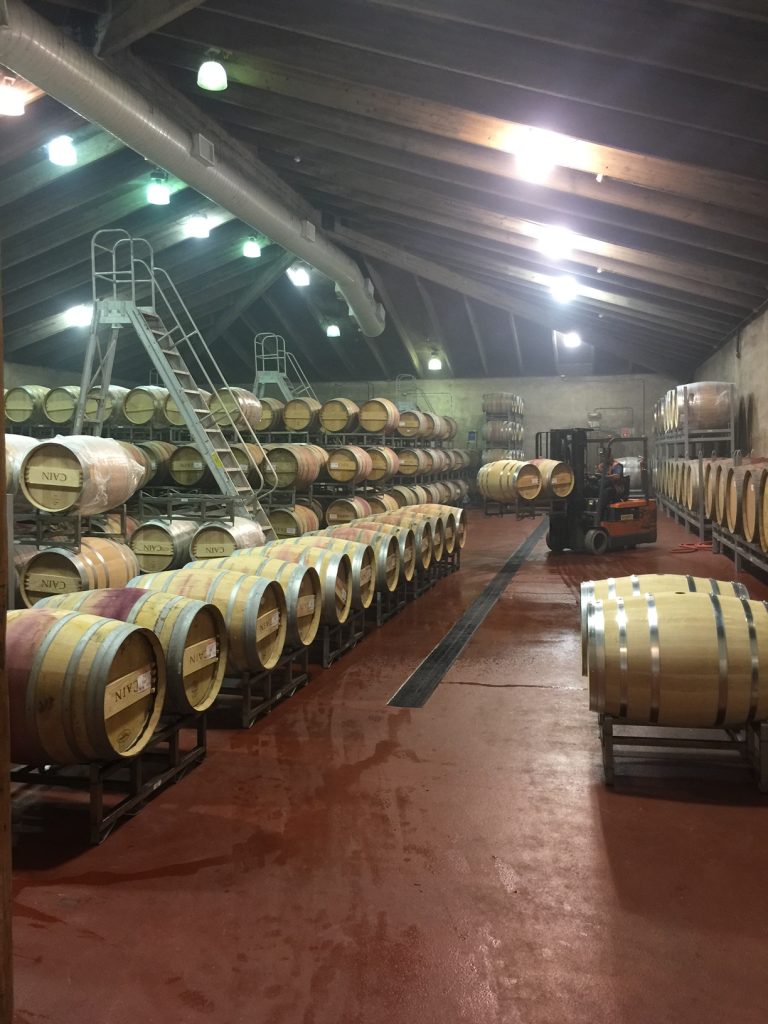
American oak wine barrels are the product of American white oak trees, or Quercus alba, which grow across the Midwest and eastern states but seem to have a stronghold in Missouri. In addition to being less expensive than French oak barrels, the American varieties impart different flavor characteristics. Not better or worse — just different. Wines aged in American oak (including Silver Oak and Ridge from California, Australia’s Grange, and many Spanish wines, especially from Rioja) may benefit from stronger, more forward flavors and a creamier mouth feel, while wines aged in French Oak may draw subtler components from the wood. That is simply a generalization, but it does provide a rule of thumb.
As the Romans learned, storage in barrels not only eases the process of moving wines, but also adds an arrow to the quiver of a winemaker. By using oak from different forests, with different densities and treated in different ways, a winemaker can alter or preserve the original flavors of the wines. Using techniques like “toasting” a barrel (firing it to give it a smoky texture), rotating wines from new (unused) and old (used) barrels, or simply changing the time spent in the barrels can have a huge impact on the final product.
So the next time that you are standing in a winery, glass in hand, be sure to ask about the wood. There is a veritable forest of information.
And always say “yes” if you are invited to visit the caves on a hot day.
WineInk: Wood and wine
With the heat turned up here in the High Country, I got to thinking about the chilly wine caves and barrel rooms I have had the opportunity to explore over the years. The cool, dry 55° air, the shadows dancing on the carved ceilings of the underground caves, the hushed echoes bouncing off the walls as the winemaker explains the process of storing and aging wine in barrels are both intoxicating and refreshing.
Wildfire in Missouri Heights prompts evacuations, burns 115 acres as of Sunday night
A wildfire broke out Sunday near Missouri Heights that prompted temporary evacuations and burned an estimated 115 acres, although no injuries or major structural damage were reported.

